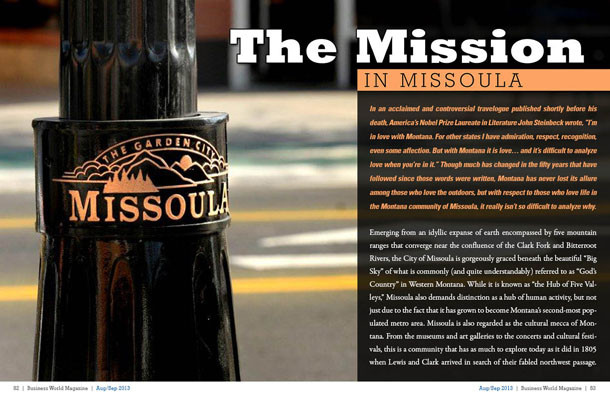
Riding the (Fiscal) Storm Out
Mountain View County adjusts to new funding model while staying busy
Â
In the 1996 film Jerry Maguire, the operative phrase was “Show me the money!â€
In Mountain View County these days, it sounds a little more like “Find us some money!â€
Thanks to sweeping budget adjustments in Alberta, municipalities across the province are being forced to adjust to a new – read: homegrown – reality when it comes to funding a never-ceasing stream of maintenance on important infrastructure projects.
And in a rural county of just more than 12,000 people and few major employers outside of the farm or oil patch, it’s an adjustment that’s prompted a wave of operations-level creativity and prioritization.
“We’re funding it ourselves and it’s definitely more difficult,†said Ryan Morrison, Mountain View’s assistant director of operational services. “We have to go through and prioritize our repairs. We’re not in any situation where we’re closing bridges. It’s more of a situation where we’re making sure we’re allotting the money to the right bridges at the right time.
“It relies on a bit more prudent approach, but we’re in good shape.â€
Morrison and colleague Ron Baker, the county’s director of operational services, oversee a departmental staff that swells to around 50 in the summer with the additional of temporary staff.
The department operates 10 road graders, a nine-truck re-graveling fleet, patching crews and a chip-sealing crew. Its main function is snowplowing in the winter before transitioning to road maintenance in the summer from June through early October.
The rest of the time, Morrison said, the ground is either too soft or too frozen for significant work.
Mountain View’s overall equipment roster includes more than 140 pieces and the road network is comprised of more than 2,800 kilometers,with 1,952 kilometers of gravel roads, 823 kilometers of chip-seal roads and 36.8 kilometers of pavement roads. Other tasks under the department’s auspices are dust control, salting, sanding and culvert installation.
The chip-seal and gravel roads have suffered after significant flooding in the last two years was followed by a particularly harsh winter, a combination that prompted a great deal of break-up in the chip-seal roads and has set workers behind in their annual graveling efforts.
The county’s bridge inventory stands at 235, and with the change in funding from provincial to local, that means Mountain View is tasked with finding an extra $4 million to $5 million annually to cover the costs of updating two or three bridges per year and engineering four replacements.
“It’s huge,†Morrison said. “We’ve got to try and find that money to construct new bridges that historically would have been funded by the province. When you’re not used to budgeting that money, it does make a big difference all down the line.â€
Toward that end, a reserve fund has been created to tuck away money for future bridge work, and employees are trying to come up with strategies to maintain the bridges farther into the future, which will mean less annual strain on the capital-replacement bottom line.
Alberta had funded bridge projects from its inception in 1905 until 2013, before changing course.
A suggestion from the provincial level over the last several years has been that Alberta’s road network is over-expanded and has too many bridges as it is, so municipalities are being asked to prioritize them, and, when their life expectancy is over, remove them. The idea on the surface generates instantly negative feedback from local residents, Morrison said, but it’s somewhat more manageable because bridges these days are being engineered to last 100 years, rather than 35.
“It definitely affects the service levels of taxpayers in the province of Alberta – being able to cross streams and rivers, and then not being able to cross them in the future,†Morrison said.
“It’s pretty nice for someone in the legislature in Edmonton to say that, but it’s a little different when it’s out here in the actual grassroots of Alberta.Hopefully we can build bridges that take less maintenance and will last longer, so that will bring up the curve a little bit better into the future.â€
Elsewhere, the county is intently focused on a project intended to deal with erosion along the Red Deer River, which has been significant in the last few years as the river has cut into new channels or re-explored century-old ones that have since been redeveloped. A five-kilometer berm intended to stop the channel migration is in the approval stage with the province and landowners and could be ready for construction as soon as this fall.
The $3.5 million project will be paid for out of flood-mitigation funds set aside by the province in 2013.
Also on the agenda is a reconstruction of Acme Road over Highway 2, which, in Morrison’s estimation, will “promote goods being moved on a better road from the west side to the east side of the county.â€
It was an old county road and engineering for its full replacement was begun in 2007. Half the construction was completed last year, and that half will be paved this year, Morrison said. The other half, he said, will be done in phases over the next few years in line with other road priorities.
The budget for the entire Acme project was $7 million, and, not surprisingly, much of Morrison’s outlook for the future revolves around similarly large numbers, local input and circumstance.
“We do have long-term planning here, and the only thing it depends on is public opinion and need for the county,†he said. “Sometimes you have a five-year plan and something comes up, you have a major disaster or some sort of road doesn’t perform or a new industry moves to the county and creates more traffic. That does alter that five-year plan.
“Hopefully we’ll be able to see those things coming and plan for them a little bit better so we can start building infrastructure around it.â€
AT A GLANCE
WHO: Mountain View County
WHAT: Municipality, comprised of the towns of Carstairs, Didsbury, Olds and Sundre, and the village of Cremona, that’s home to 12,359 residents (as of the 2011 federal census)
WHERE: South central Alberta, about 100 kilometers north of Calgary and 200 kilometers south of Edmonton
WEBSITE: www.MountainViewCounty.com








